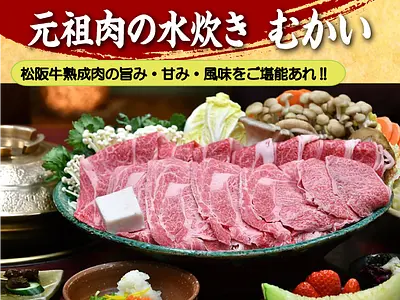A must-see! The whaling boat event at Toride Shrine is a UNESCO intangible cultural heritage that has been held since the Edo period!!
The Toride Shrine Whale Boat Festival in the Tomita district of YokkaichiCity City has been passed down as a local festival that values tradition and formality. In 2016, it was registered as a UNESCO Intangible Cultural Heritage along with 33 other Yama, Hoko, and Yatai festivals across the country. This year, the town parade will be held on August 14th, and the main parade will be held on the 15th. We will provide a detailed explanation of the appeal of this world-famous festival.
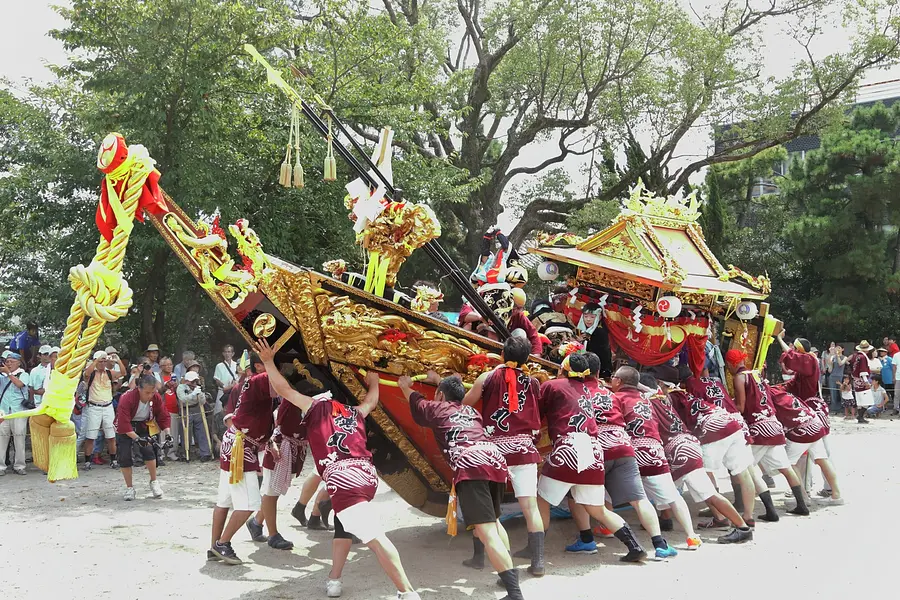
Article production / Mie Travel Ambassador Osmanthus
▼Table of contents
- What is the Toride Shrine Whale Boat Event?
- Flow of the event
- First, pay attention to the floats
- Kitajima Group "Jinjamaru"
- Nakajima Group "Shintokumaru"
- Nanto Group "Kankeimaru"
- Furukawa Town "Gongenmaru"
- Whale Ship Story
- Festival Schedule
- access
- 6 Recommended Gourmet Spots in the Area
*Photos provided by YokkaichiCity 's Cultural Heritage website.
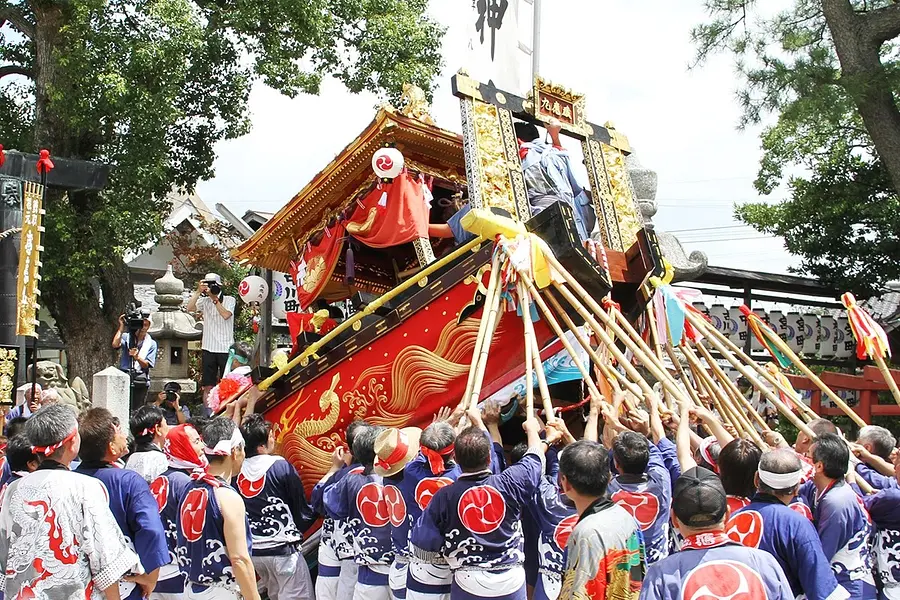.jpg)
What is the Toride Shrine Whale Boat Event?
The Toride Shrine Whale Boat Event was designated an Important Intangible Folk Cultural Property of Japan in 1997, and in 2016 was registered as a UNESCO Intangible Cultural Heritage as one of the 33 Yama, Hoko, and Yatai Events across the country.
The Toride Shrine Whale Boat Event is a typical festival event that retains the most ancient style among the rare land-based mock whaling events found in the Hokuriku region.
The event involves four groups (Kitajima Group, Nakajima Group, Minamijima Group, and Furukawa Town) each bringing out a whaling boat float (Jinja Maru, Shintoku Maru, Kan'o Maru, and Gongen Maru) decorated with lavish carvings and curtains. These floats chase a paper whale, are counterattacked, and then the floats repeatedly corner and kill the whale.
It is held every year on August 14th and 15th, with a town parade on the 14th and a parade to Toride Shrine (main parade) on the 15th. This event is noteworthy in folklore as a prayer for bountiful harvests by performing a whale-catching act, since whales are seen as a symbol of large catches and wealth.
At Toride Shrine, there is a document detailing the history of the whaling boat event, which states that the event began in 1781. It is one of Japan's most famous festivals, continuing for over 200 years.
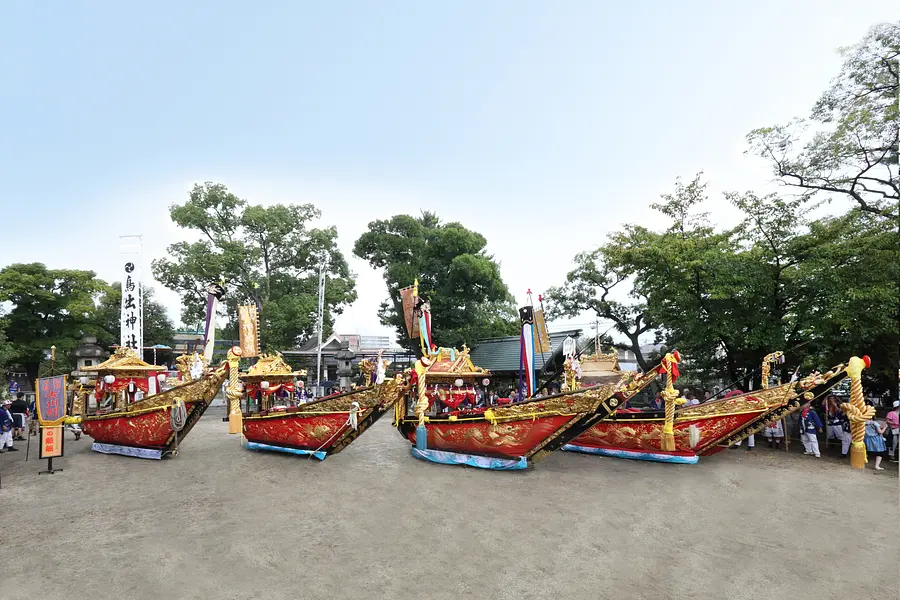
Flow of the event
It is held every year on August 14th and 15th, and the whaling boat event begins with the "fire-quenching festival" held on the morning of the 14th. Each group visits Toride Shrine with a torch, praying for peace in the town and a safe event, bringing along the costumes and tools they will use for the event, and undergoes purification. They receive the sacred fire from the priest, transfer it to the torch they brought with them, and watch it burn out. After that, they return to each town and the town parade takes place.
On the 15th, each town takes turns donating one whaling stick to the main shrine of Toride Shrine and one to Ebisu Shrine (Furukawa Town only donates one to the main shrine).
Along the way, there is some strange bargaining going on between the groups on either side of the torii gate. At the end, they dance around in a circle, singing and beating drums, and then go to the shrine to give thanks for the successful completion of the event, and all the events come to an end.
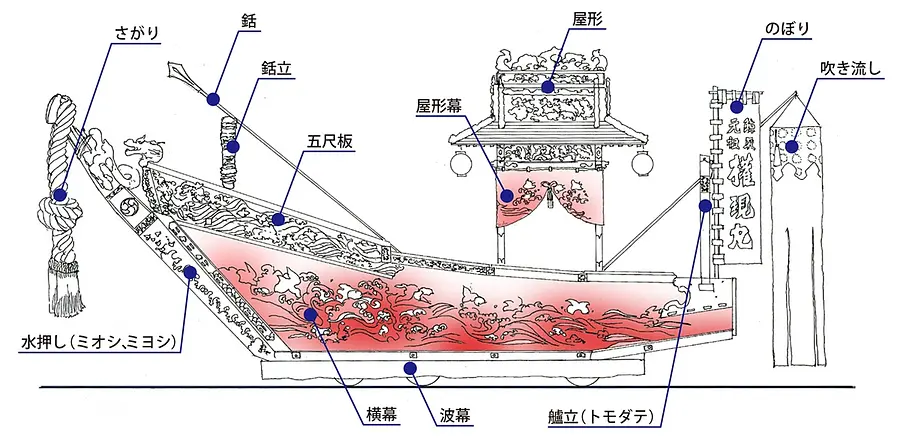
First, pay attention to the floats
The whaling boat floats used in the event are not the sort of boats used in actual traditional whaling, but are modeled after the royal boats used by shoguns and feudal lords in the early modern period.
The floats are equipped with mantles and are lavishly decorated with gorgeous carvings, side curtains embroidered with gold thread on scarlet silk, and water-pressing poles also made of gold thread. The glittering floats are paraded around in a valiant manner, with dressed-up hazashi and oarsmen at the bow and drummers in the mantles, and the event progresses to the accompaniment of songs and drums.
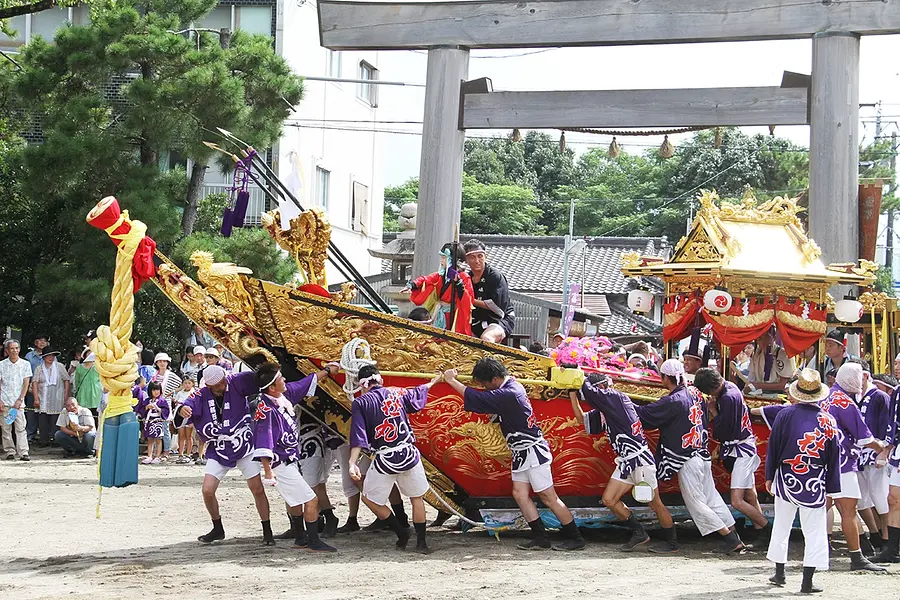
Kitajima Group "Shrine Maru"
It is 6250mm long, 1570mm wide at its widest point, and 1130mm deep, with a gold-plated roof.
The side curtain is made of scarlet silk and features a shachihoko (a fish-like creature with a tiger's head) and a plover flying through the waves, representing the bountiful sea in the morning.
The sashimi is made with a water-pressed sashimi technique, and only the Kitajima group uses a special technique of gold thread binding, which is tied in a double, tight knot.
The decorative storage box has the date 1853 inscribed on it, indicating that this event was held in the late Edo period.
On Kitajima Gumi's Instagram, they publish information such as the times when Kitajima Gumi's town parades take place.

Nakajima Group "Shintokumaru"
Length 5730mm, maximum width 1425mm, depth 1060mm. The roof is made of scarlet silk and has a flying dragon embroidered on it, depicting the sun and the flying dragon, while the side curtains are made of scarlet silk and have dragons and waves embroidered in gold thread, representing a dragon crossing the sea in the daytime.
The sashimi is made using the Mizuoshi sashimi technique and is tied in a knot.
Nakajima Group Instagram is here
The three groups, Kitajima, Nakajima, and Minamijima, take turns each year not holding a parade, and this year the Nakajima group is on holiday, so they will not be holding either the town parade or the main parade.
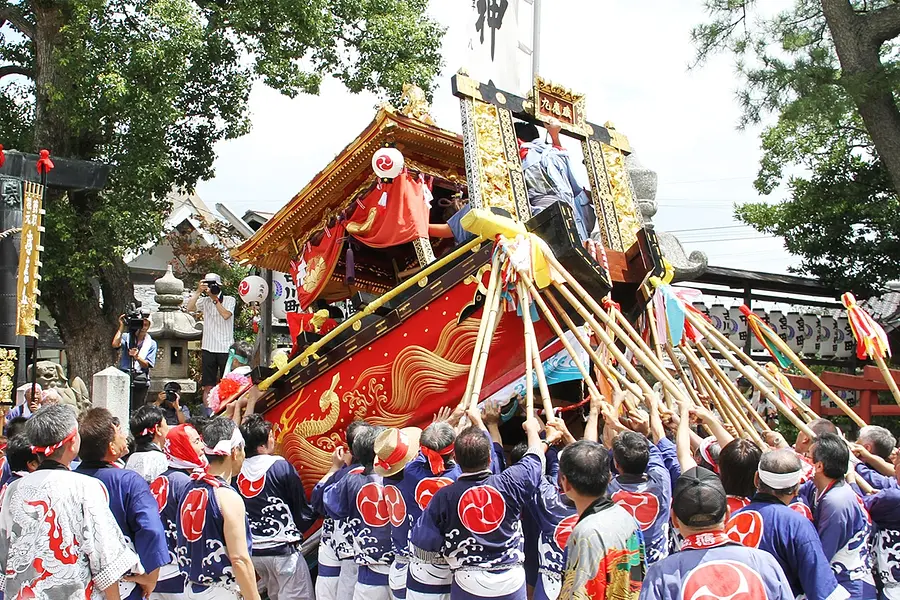
Nanto Group "Kanno Maru"
It is 6200mm long, 1500mm wide at its widest point, 880mm deep, and has a gold-thread roof.
The side curtain is made of scarlet silk and features gold thread embroidered dragon with a flowing mane and waves, representing a dragon crossing the rough ocean in the afternoon.
It is made with a hanging water-pressing technique and is tied in a tsuyu knot using gold thread winding techniques.
Minamijimagumi Instagram is here
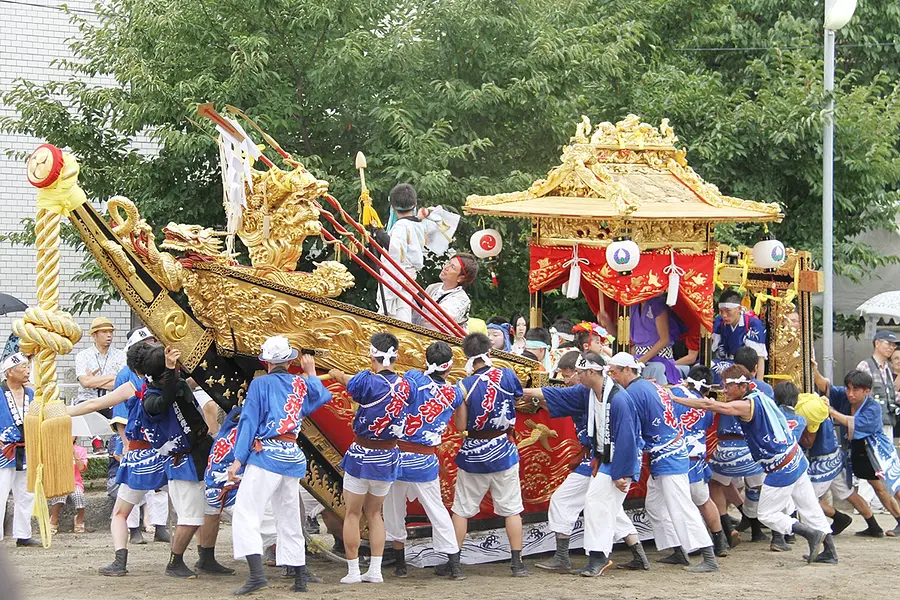
Furukawa Town "Gongenmaru"
Length 6360mm, maximum width 1500mm, depth 960mm, roof covered with gold plate and embroidered Chinese lions and peonies.
The side curtain is made of scarlet silk with gold thread, and depicts a plover flying in from Horai, where gods and immortals gather, and a calm sea with waves; this design was favored by the merchants and sake breweries of Tokaido Highway, which has prospered since the Edo period.
The sashimi is made using the water-pressing technique and is tied in a double tight knot.
Furukawa Town Instagram is here
The story of the Whaleboat performance
The performance at the whaling boat event tells the story of how the whale was found and shot.
The whaling floats that have left the port move slowly while singing songs called nagashiuta (songs sung from the time the ship departs until it arrives at its destination). The whaling begins when the whalers discover a whale offshore.
When the feather stabber gives the signal, the whaling boat tilts the float from side to side as it corners the paper-mache whale made of bamboo and black cloth. This rocking motion represents the boat being rocked by the big waves caused by the whale's huge body.
The whale is chased at the sound of a drum, but the situation turns around and the fleeing whale counterattacks, forcing the whaling boat to retreat, but then the boat regains its balance and goes on the offensive, cornering the whale again. This game of negotiation between the whale and the whaling boat is fascinating. Finally, the whaler shoots a harpoon into the whale as it emerges from the water. After killing the whale, the whaling boat raises the stern of the boat in thanks to the gods after spearing the whale, and sings a song of thanks for the big catch.
Who's the main character? Introducing the actors
The whaleboat event has performers with various roles.
【rider】
Rowers are around 3 to 7 years old and wait after the feathers are pierced on the float.
Hazashi (also called "hatashi", "hadashi", or "hazashi"), is a Japanese word for "harpooning".Sometimes I do.) 4th to 6th grade elementary school students The main dancer at the event
Taiko drummers: 2nd year middle school students - around 20 years old. All events are timed to the rhythm of the taiko drums, so they play an important role.
The waist holder is around 50 to 65 years old and supports and stabilizes the waist of the feather-striker. In addition to keeping an eye on the rider and the performer, they also play an important role in judging the situation and controlling the flow of the performance.
🐋🐋🐋🐋🐋🐋🐋🐋🐋🐋🐋🐋🐋🐋🐋🐋🐋🐋🐋🐋🐋🐋🐋🐋🐋🐋🐋🐋
[Whale Head]
Whale-Hat Costumers: High school students to around 30 years old. Wearing a paper-mache whale costume, they play the role of the villain, but can also be considered the other main character of the event.
The highlight of the performance is seeing how wildly and violently he acts as a whale.
🐋🐋🐋🐋🐋🐋🐋🐋🐋🐋🐋🐋🐋🐋🐋🐋🐋🐋🐋🐋🐋🐋🐋🐋🐋🐋🐋🐋
[Kneader]
Steering wheel High school student to about 50 years old The person who sits at the stern of the ship and decides the direction of the ship
Hara High School students - around 50 years old - In charge of moving the float
Singers: Around 60 to 85 years old. They lead the event by singing Nagashiuta (traditional folk songs) and Yakuuta (traditional folk songs) around the floats.
A parishioner of the neighborhood who carries the Bonten. This person is responsible for carrying the Bonten in front of the house or on a lantern stand.
Festival Schedule

Town parade on the 14th
On the 14th, each group will parade through the town. They will perform on National Route 1 and in the alleys of each group. The performance of the whales running through the narrow alleys and in front of the houses, and the floats chasing them, is very impressive.
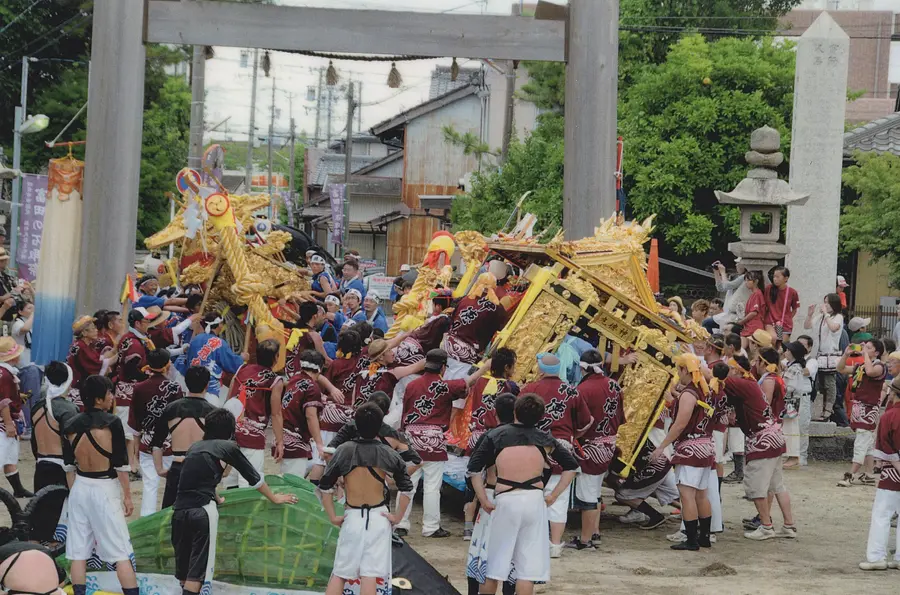
On the 15th, the main dance will be held at Toride Shrine.
On the 15th, the Toride Shrine's annual festival begins in the morning, with the parishioners' representatives from each town in attendance. The main parade is held as a dedication to the festival. After the festival is over, the Kitajima group, who were Miyamori, enter the shrine grounds in the following order: Nakajima group, Minamijima group, and Furukawa-cho.
At around 9:30, the Kitajima group sets up a Bonten at the large torii gate of the shrine, performs a 30-minute performance on the road outside the shrine grounds, and then strikes the torii gate. After that, at 10:00, they enter the shrine grounds, strike the main hall, and then strike the Ebisu Shrine, and perform a 90-minute dedication performance.
The next group, the Nakajima group, begins striking in front of the large torii gate, and at 11:30 they enter the shrine grounds and make their offerings in the same manner.
The Minamijima group will also strike the large torii gate, then enter the shrine grounds at 1 o'clock and make their offering in the same manner.
Similarly, at Furukawacho, you will enter the large torii gate, enter the grounds at 2:30, and enter only the main hall.
The reason why the three groups of Hama (Kitajima, Nakajima, and Minamijima) also spear whales at Ebisu Shrine, but Furukawa Town does not, is because to the three groups of Hama, whose livelihood was fishing, Ebisu Shrine is the god of abundant catches, and they perform whaling to show their gratitude. Furukawa Town, which did not make a living from fishing, believes that it has no connection to Ebisu Shrine.
During the main practice, if the group practicing within the shrine grounds and the group that has come to the torii gate work well together, they will engage in a sort of dialogue on either side of the torii gate, which is a highlight of the event.
Last year, the main practice on the 15th was cancelled due to an approaching typhoon. Although it is worrying at this time of year, we hope that this year we will have good weather for both days.
[This is the timetable for the main dance to be held at Toride Shrine on the 15th]
10:00-11:30 Kitajima group
11:30-13:00 Minamijima group
13:00-14:30 Furukawacho
This year, Nakajima-gumi is taking a break, so the main practice will be carried out by three groups: Kitajima-gumi, Minamijima-gumi, and Furukawa-cho.
Toride Shrine also posts information about whaling boat events on its Instagram.
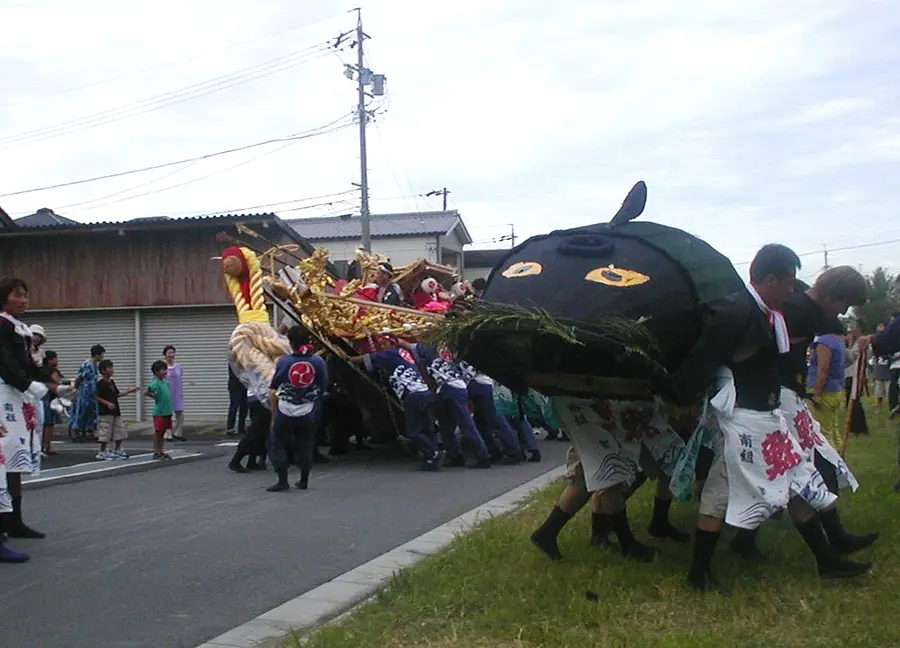
Finale with beach training and shrine visit
Beach kneading is a kneading that takes place on the beach after the three groups of beach kneading have finished the main kneading. There was originally a beach in Higashi Tomita, but after the Ise Bay Typhoon, National Route 23 was built to double as a breakwater, and the area was separated from the coast, which was filled in and turned into an industrial complex. Currently, the square on the west side of National Route 23 is called the beach, and the kneading is held on the street facing it. During the beach kneading, whales are speared facing south towards IseJingu and north towards TadoTaishaShrine.
In Furukawa Town, which does not have a beach, the whalers turn south at Amikan Bridge over the Toshikawa River and spear whales toward IseJingu during the town parade. At the end of the town parade, they spear TadoTaishaShrine at Tado Shrine at the westernmost end of the town area on Chuo Street.
After all four groups have completed their parades, they put the Whale Boat Floats back into the float storehouse. After that, starting with the Kitajima group, they take turns carrying lanterns, beating drums and singing the Ise Ondo songs on the way to Toride Shrine. They make a circle on the streets and in the shrine grounds and circle around repeatedly before arriving at Toride Shrine. They pay their respects at the main shrine and perform a "miya-mairi" ceremony to give thanks for the safe completion of the event, and all the events come to an end.
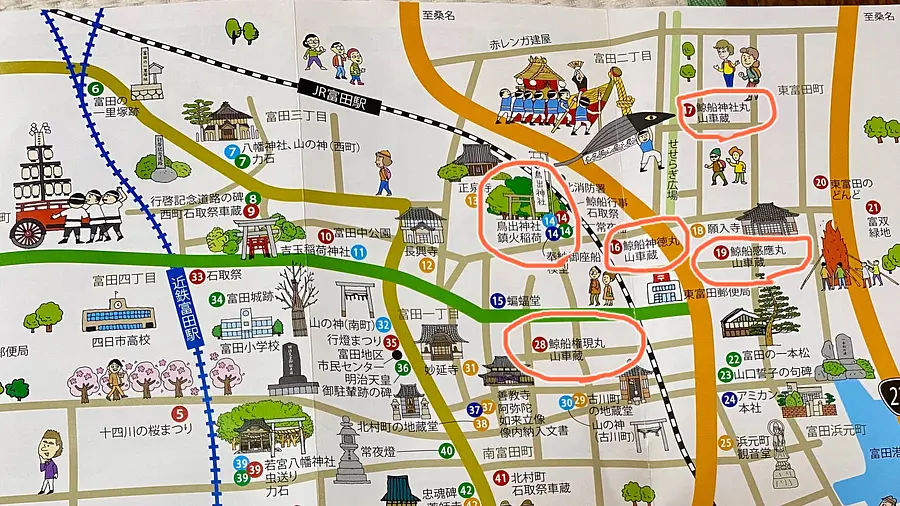
access
[How to get to Toride Shrine in Honneri]
Address: 2-16-4 YokkaichiCity
Phone number: 059-366-1513 (Tomita Festival Liaison Council)
Access by public transport: 7 minutes on foot from JR Tomita Station or Kintetsu Tomita Station
[How to access the town parade]
The places marked with red circles on the map are the locations of each group's float storage and Toride Shrine.
If you walk towards the float storehouse while looking at the map, you can also see the town parade.
There is no parking available, so please use public transportation.
Portable toilets will be installed at Toride Shrine.

6 Recommended Gourmet Spots in the Area
Tuna restaurant
There are no food stalls at Toride Shrine's whaling boat event. Watching the town parade and the main parade will make you hungry. If you go a little further, you can eat at AEON Mall Yokkaichi Kita, but if you want to eat something delicious that you can only get here, we recommend the popular "Tuna Restaurant" that has been featured on TV and social media. It is a popular restaurant and there are long lines at lunchtime on weekends, so we recommend going in the evening after watching the town parade and the main parade to have an early dinner and get a smooth entry into the restaurant.
Address: 1-15 fuso 2-chome YokkaichiCity Mie Prefecture
Phone number: 059-365-6064
Access: 15 minutes walk from JR Tomita Station
For more information on Maguro Restaurant, click here ↓
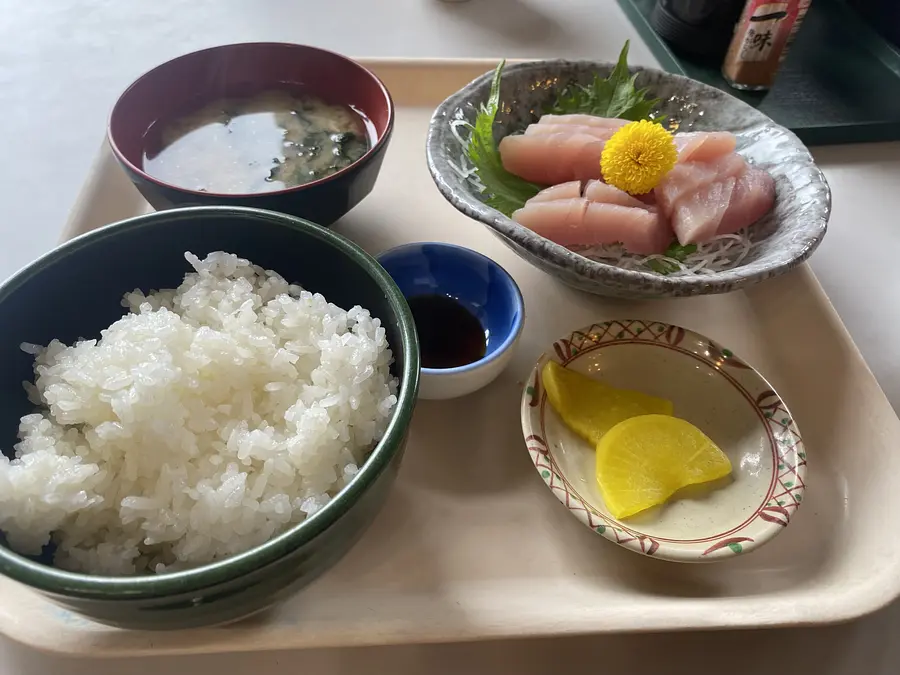
Second Seafarers Hall
The tuna restaurant, whose sign is clearly visible from Route 23, is often featured on TV and other media, so on weekends it is packed and you are bound to have to wait in line. However, for those who still want to eat sashimi and seafood, we recommend the restaurant in the Daini Sailors' Hall, which is very close to the tuna restaurant. When I went to the tuna restaurant during Golden Week this year, there was a long line, so I gave up in a second and went to the Daini Sailors' Hall. That's when I had the albacore tuna sashimi set meal. The sashimi was very fresh and delicious. My family, who went with me, ordered the shrimp fry set meal. The price was reasonable, too, and it cost less than 5,000 yen for our family of five. The restaurant is open on the 14th, the day of the town kneading, but is closed on the 15th, the day of the main kneading.
Address: 1-1 fuso 2-YokkaichiCity
Phone number: 059-364-2369 (Second Seamen's Hall)
Access: 15 minutes walk east from JR Tomita Station
Yokkaichi Himono Restaurant
For those who want to eat delicious dried fish instead of sashimi, we recommend "Yokkaichi Himono Shokudo" across from the tuna restaurant. It opened in 1936 in the port town of Tomita in YokkaichiCity, which has long flourished as a fishing town. There are also special treats that can only be enjoyed by customers who visit, such as one-of-a-kind items available only on that day and oversized dried fish.
The recommended dish is the Shima Atka mackerel set meal. The plump meat and concentrated flavor are the best. It comes with rice, miso soup, and a small side dish for 1,000 yen. A large serving of rice is +100 yen, and a special serving is +200 yen.
Address: 2-1-30 fuso YokkaichiCity Mie Prefecture
Phone number: 059-365-3123
Access: 15 minutes walk from JR Tomita Station.
Nofu Sushi
Maguro Restaurant and Himono Shokudo are located in fuso cho, across National Route 23. It's a 20-minute drive from Kintetsu Tomita Station, so for those who think it's a bit far, we asked the Whale Boat Preservation Society for recommendations, and they recommended Nofu Sushi, located very close to Toride Shrine. This sushi restaurant is loved by locals, and usually serves lunch for 1,200 yen. There is no lunch on the day of the Whale Boat Event due to Obon, but you can still eat delicious sushi.
Address: 15-15 Higashi Tomitacho YokkaichiCity Mie Prefecture
Phone number: 059-365-0384
Access: 9 minutes on foot from JR Tomita Station
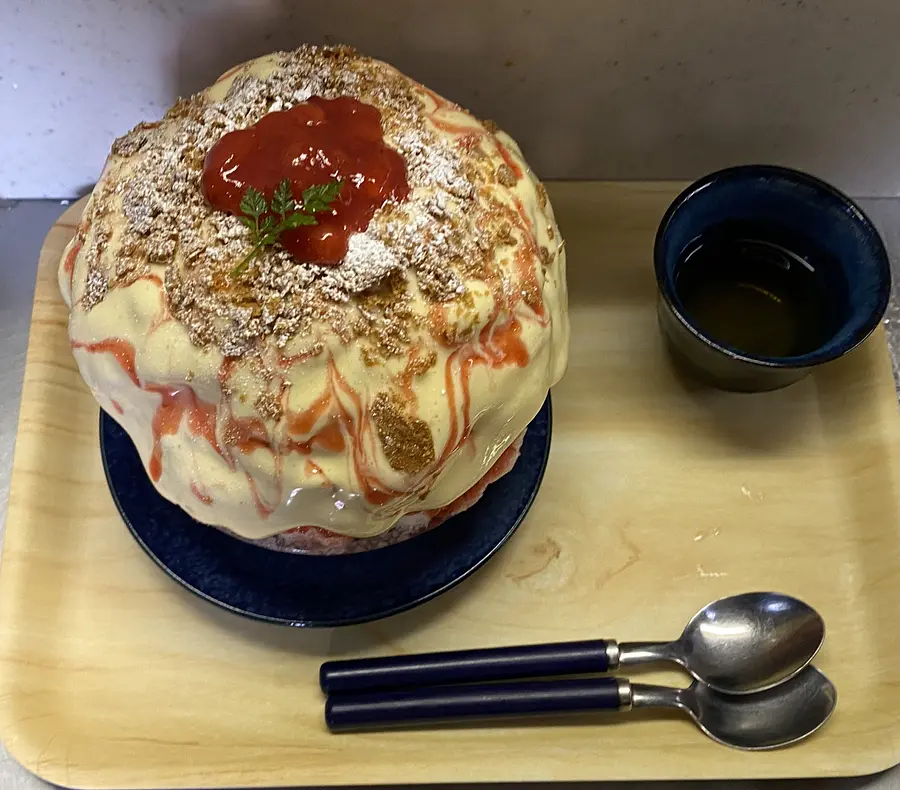
Sebon Marusan
Speaking of food stalls at summer festivals, shaved ice is the first thing that comes to mind. Just a short walk from Toride Shrine, there is a shop where you can eat delicious shaved ice.
"Cebon Marusan" is a famous shop in YokkaichiCity. Last summer, I waited in line for about an hour on a Sunday to eat the striking, vivid purple "Hydrangea Special." On the day I visited for the interview, they were making "Strawberry Pie" and "Grilled Corn." Both are excellent shaved ice that are worth waiting in line for an hour to eat.
Address: 8-11 Toshimaharacho YokkaichiCity Mie Prefecture
Access: 535m from JR "Tomita Station"
Sebonmaru's third proprietress's Instagram https://www.instagram.com/katayama_.yuko/?hl=ja#
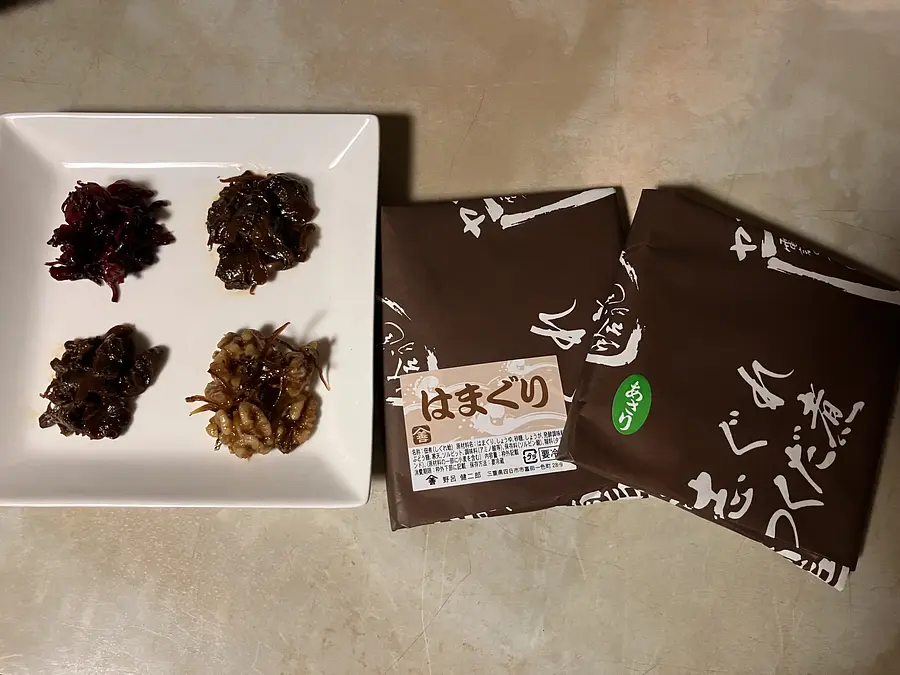
Yamazen Noro Shop
For those who want to see the whaling boat event, eat delicious fish, and buy souvenirs, we recommend Yamazen Noro Shoten. It is a wholesaler of tsukudani (food preserved in soy sauce) and also sells them retail. Their motto is "expensive and delicious, not cheap and delicious products," and their clam and clam tsukudani are soft and not strong, with a slight sweetness that makes them easy to eat for anyone. What caught my eye was the "Horse mackerel nanbanzuke made by a chef." You can also make reservations for eel on the Day of the Ox.
Address: 27-42 Tomita Isshikicho YokkaichiCity Mie Prefecture
Nearby spots
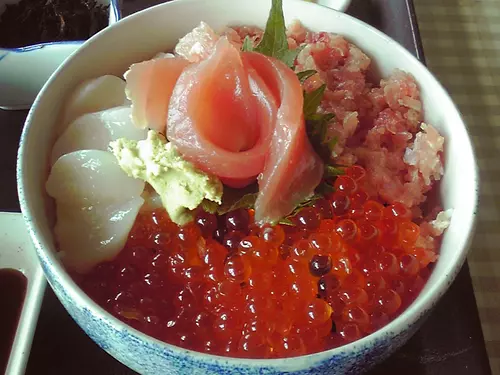
直線距離:850m
Tuna restaurant

直線距離:1.1km
Second Seafarers Hall

直線距離:1.3km
Yokkaichi Port Building
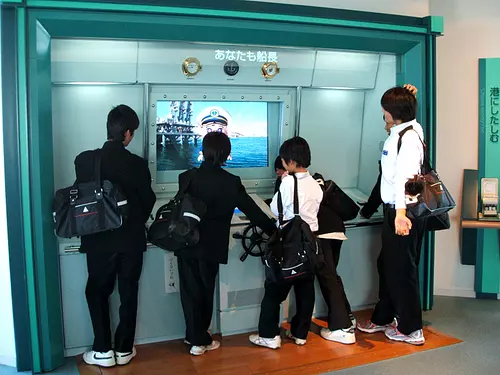
直線距離:1.3km
Yokkaichi Port Building Observation Exhibition Room “Umiterasu 14”

直線距離:1.5km
Tomoya
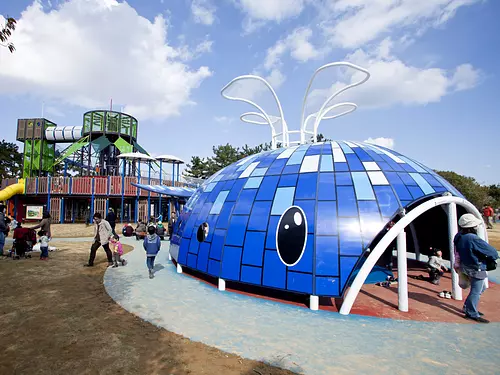
直線距離:1.7km
KasumigauraPark
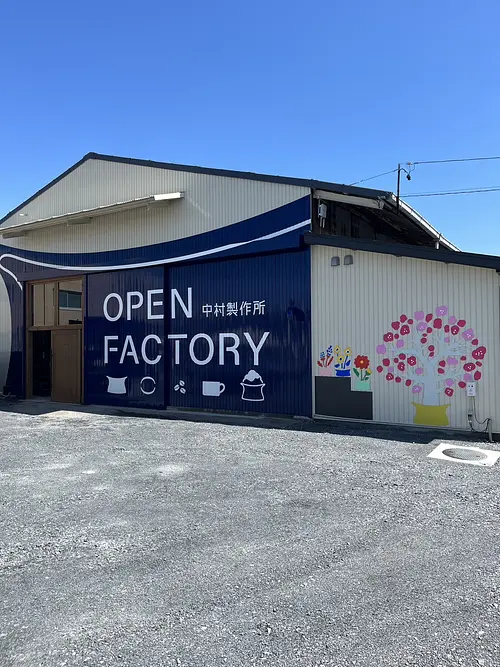
直線距離:1.7km
Nakamura Manufacturing Open Factory Yokkaichi Factory Cafe
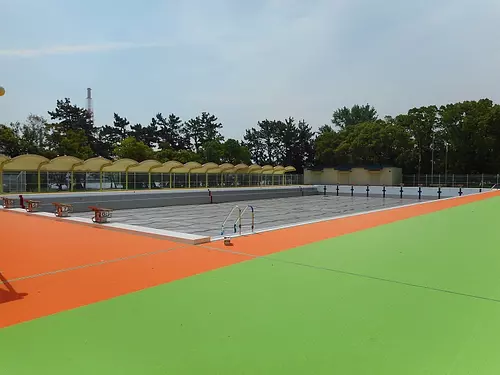
直線距離:1.8km
Kasumigaura Pool
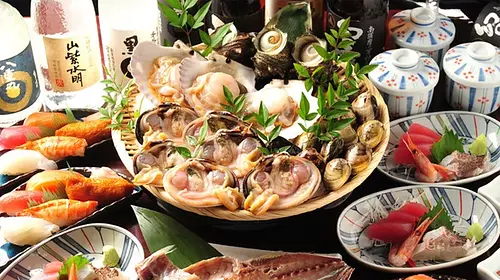
直線距離:1.9km
bamboo sushi
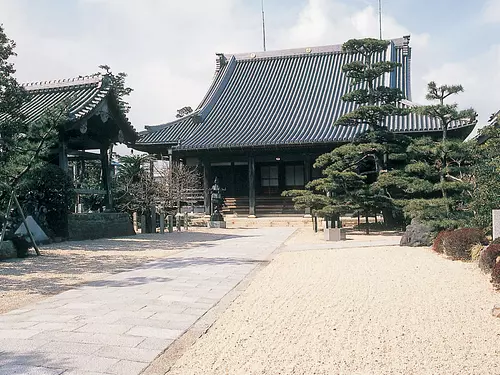
直線距離:2.1km
Zenyoji Temple
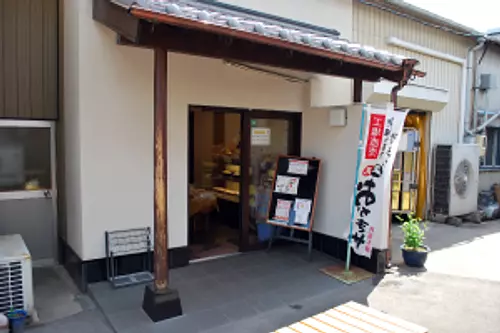
直線距離:2.2km
Okakiya Kinfuku Honpo

直線距離:2.4km
Yokkaichi Dome
nearby events

Date: Friday, November 1, 2024 - Friday, February 28, 2025
直線距離:4.9km
YOKKAICHI WINTER ILLUMINATION

Date: Weekdays from November 6th (Wed) to November 27th (Wed) 2024...
直線距離:5.4km
Weekdays only Niwamichi Spot Terrace

Date: Friday, April 1, 2024 - Monday, September 30, 2024...
直線距離:5.9km
"Yokkaichi Petrochemical Complex Night View Cruise 2024" is now on!
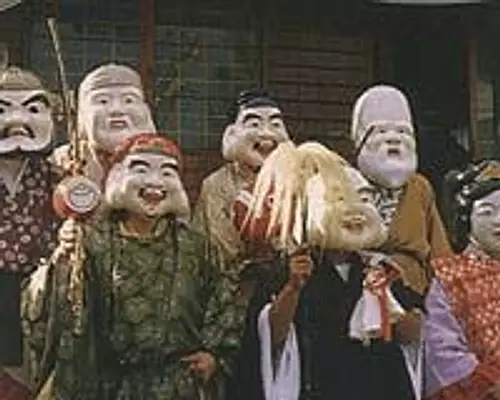
Date: Saturday, November 23, 2024
直線距離:6.8km
Junenji Seven Lucky Gods Festival
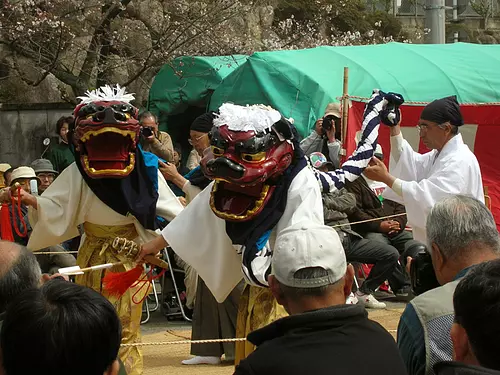
Date: Tuesday, December 24, 2024
直線距離:6.9km
Ise Grand Kagura
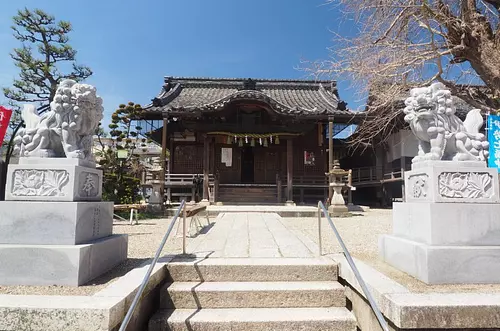
Date: January 1, 2025 (Wed) - January 7, 2025 (Tue)
直線距離:7.3km
Daifukudaji Temple New Year's visit
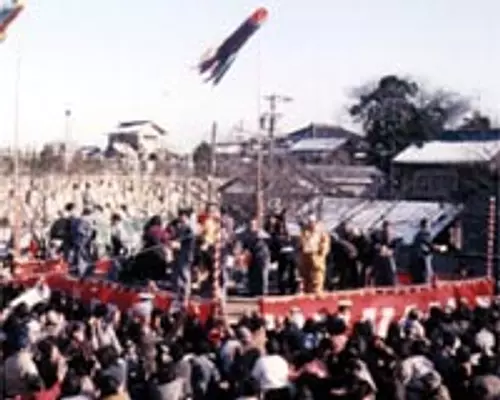
Date: Monday, February 3, 2025
直線距離:7.3km
Daifukudaji Temple Setsubun Festival

Date: Saturday, October 19, 2024 - Sunday, December 8, 2024
直線距離:7.3km
The 33rd KuwanaCity Arts and Culture Festival
![[KuwanaCity Museum] New Year's Special Exhibition: Very Good Things](https://www.kankomie.or.jp/assets/no_thumb_330_220-b92d6e1d59ef607a7e7b159cb7512e62277106a0b4528087c30473b5d33e1fd6.webp)
Date: Saturday, January 11, 2025 to Monday, February 24, 2025 (National Holiday)
直線距離:7.5km
[KuwanaCity Museum] New Year's Special Exhibition: Very Good Things
![[KuwanaCity Museum] Special Exhibition Collaboration - Viatin Mie, the trajectory of 2024](https://www.kankomie.or.jp/assets/no_thumb_330_220-b92d6e1d59ef607a7e7b159cb7512e62277106a0b4528087c30473b5d33e1fd6.webp)
Date: Saturday, December 14, 2024 to Sunday, December 22, 2024
直線距離:7.5km
[KuwanaCity Museum] Special Exhibition Collaboration - Viatin Mie, the trajectory of 2024
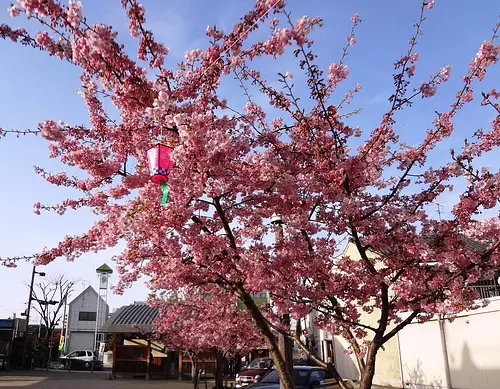
Date: Mid-February to mid-March 2025
直線距離:7.7km
Kawazu cherry blossoms in Kuwana Teramachi Dori shopping street
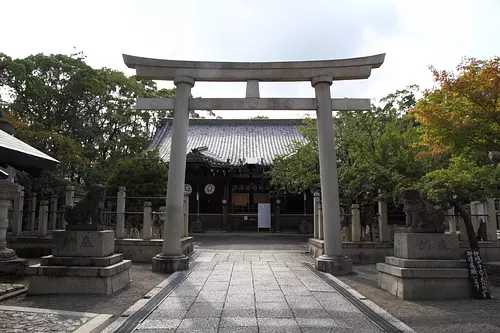
Date: January 1, 2025 (Wed) - January 7, 2025 (Tue)
直線距離:7.8km
New Year's visit to KuwanaSosha (Kasuga Shrine)
Plays and experiences nearby
直線距離:5.9km
Pottery experience for adults: Make a sake cup with Yokkaichi Banko-Yaki ~Yokkaichi Gastronomy Tourism~
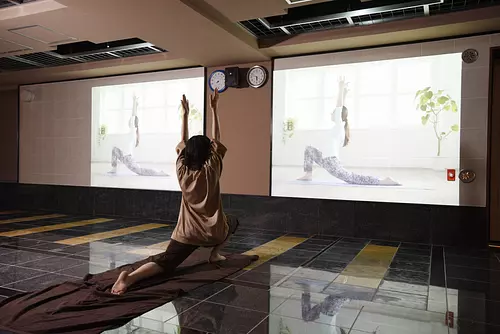
直線距離:7.2km
The ultimate bedrock bathing experience at a day trip hot spring “Yuami no Ganbanyoku”
![[Come empty-handed, no reservations required] Experience an open-air bath surrounded by nature! One-day hot spring “YuaminoShima” is one of the largest in Japan!](https://www.kankomie.or.jp/rails/active_storage/representations/proxy/eyJfcmFpbHMiOnsibWVzc2FnZSI6IkJBaHBBcDBpIiwiZXhwIjpudWxsLCJwdXIiOiJibG9iX2lkIn19--fab0109693f71819669f118e8aeb86958a65d276/eyJfcmFpbHMiOnsibWVzc2FnZSI6IkJBaDdCem9MWm05eWJXRjBPZ2wzWldKd09oSnlaWE5wZW1WZmRHOWZabWwwV3dkcEF2UUJNQT09IiwiZXhwIjpudWxsLCJwdXIiOiJ2YXJpYXRpb24ifX0=--8d6bc4b517fae43c9e30c66a38f93836dd92b535/488_1_org.jpg)
直線距離:7.2km
[Come empty-handed, no reservations required] Experience an open-air bath surrounded by nature! One-day hot spring “YuaminoShima” is one of the largest in Japan!
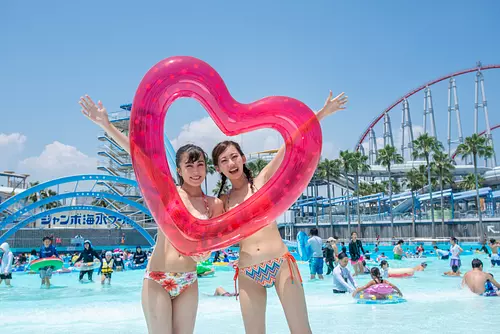
直線距離:7.3km
Enjoy summer water fun in one of the world's largest jumbo seawater pools!
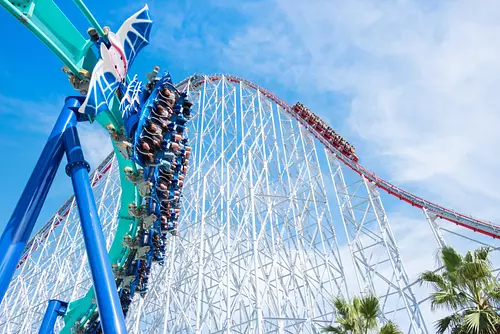
直線距離:7.5km
Let's play all the thrilling machines at one of the largest amusement parks in Japan!
![Limited to 20 people per day! Application for 1 person OK [Hotel Hanamizuki, luxury lunch course & spectacular view! "YuaminoShima" plan with the finest open-air bath experience]](https://www.kankomie.or.jp/rails/active_storage/representations/proxy/eyJfcmFpbHMiOnsibWVzc2FnZSI6IkJBaHBBcVFpIiwiZXhwIjpudWxsLCJwdXIiOiJibG9iX2lkIn19--5e54e7004c6724ca3680f7b119439aea0cc68def/eyJfcmFpbHMiOnsibWVzc2FnZSI6IkJBaDdCem9MWm05eWJXRjBPZ2wzWldKd09oSnlaWE5wZW1WZmRHOWZabWwwV3dkcEF2UUJNQT09IiwiZXhwIjpudWxsLCJwdXIiOiJ2YXJpYXRpb24ifX0=--8d6bc4b517fae43c9e30c66a38f93836dd92b535/489_1_org.jpg)
直線距離:7.5km
Limited to 20 people per day! Application for 1 person OK [Hotel Hanamizuki, luxury lunch course & spectacular view! "YuaminoShima" plan with the finest open-air bath experience]

直線距離:7.9km
NagashimaFarm 's original "shaved ice" is a summer staple | Shaved Ice (NagashimaFarm)

直線距離:7.9km
NagashimaFarm 's Olive Marche

直線距離:7.9km
[Free viewing] Kumamon is coming to NagashimaFarm on Sunday, November 27th!
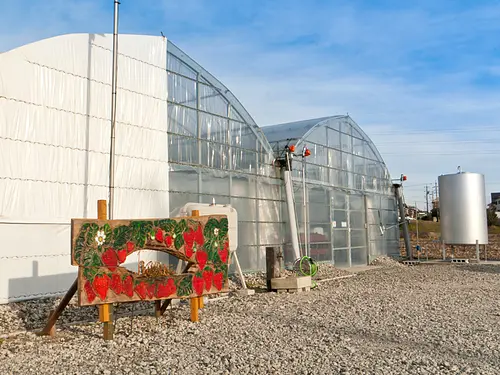
直線距離:8.4km
haru strawberry farm strawberry picking
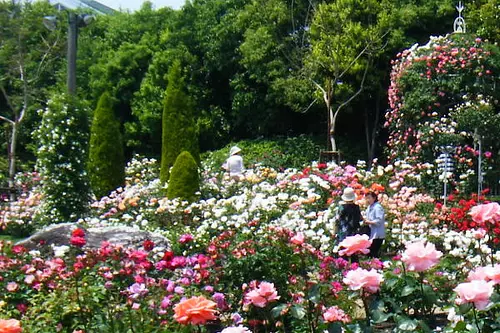
直線距離:9.4km
Experience the elegant scent of roses! ~Nabananosato Rose Garden~ (Spring/Autumn)
![A hidden spot! "Nabana Nabananosato" day trip hot spring [You can bring your own, no reservations required]](https://www.kankomie.or.jp/rails/active_storage/representations/proxy/eyJfcmFpbHMiOnsibWVzc2FnZSI6IkJBaHBBKzArQkE9PSIsImV4cCI6bnVsbCwicHVyIjoiYmxvYl9pZCJ9fQ==--2129036ef17ba3622f66beeaa62cf2e10a4f188f/eyJfcmFpbHMiOnsibWVzc2FnZSI6IkJBaDdCem9MWm05eWJXRjBPZ2wzWldKd09oSnlaWE5wZW1WZmRHOWZabWwwV3dkcEF2UUJNQT09IiwiZXhwIjpudWxsLCJwdXIiOiJ2YXJpYXRpb24ifX0=--8d6bc4b517fae43c9e30c66a38f93836dd92b535/%E9%87%8C%E3%81%AE%E6%B9%AF%E3%82%A4%E3%83%A1%E3%83%BC%E3%82%B8.jpg)
直線距離:9.6km
A hidden spot! "Nabana Nabananosato" day trip hot spring [You can bring your own, no reservations required]
| Category | |
|---|---|
| season | |
| area |

